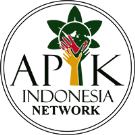STRATEGI PENGEMBANGAN EKOWISATA DI TAMAN NASIONAL KELIMUTU
DOI:
10.29303/jbl.v2i1.128Published:
2019-03-01Issue:
Vol. 2 No. 1 (2019)Keywords:
Kelimutu National Park, Ecotourism, Strategy, Development.Articles
Downloads
How to Cite
Downloads
Metrics
Abstract
Ecotourism development strategy in Kelimutu National Park (KNP) is very necessary because KNP has enormous potential for ecotourism development. The potential is either in the form of flora, fauna, geology, environmental beauty, and cultural potential of the surrounding community. The aims of this study are to know the right strategy in ecotourism development and determine the priority scale of ecotourism pathways development in KNP. This study uses a case study approach. Data were collected through in-depth interviews of KNP management, stakeholders in the management of ecotourism of KNP, communities around KNP, and observation. The data were analyzed using stakeholders analysis to determine the stakholders that involved on ecotourism management in KNP, SWOT (Strength, Weakness, Opportunities, Threats) analysis to determine the right strategy in ecotourism management, and AHP (Analysis Hierarcy Process) to determine the priority scale of ecotourism development from several ecotourism pathway in KNP. The results show that the most appropriate strategy in the development of ecotourism in KNP is offensive strategy (taking advantage of opportunities and strengths owned), and ecotourism pathway that get the first priority to be developed is the Moni Pathway, the second is Wologai Pathway, the third is Sokoria Pathway, and the fourth is Niowula Pathway.
References
[TNK] Taman Nasional Kelimutu. (2009). Rencana Pengelolaan Jangka Panjang Taman Nasional Kelimutu Periode 2009 – 2029, Kabupaten Ende, Provinsi NTT. Ende: Taman Nasional Kelimutu.
[TNK] Taman Nasional Kelimutu. (2012). Statistik Balai Taman Nasional Kelimutu: Tahun 2008 – 2011. Ende: Balai Taman Nasional Kelimutu, Direktorat Jenderal Perlindungan Hutan dan konservasi Alam (PHKA), Kementerian Kehutanan.
[TNK] Taman Nasional Kelimutu. (2015). Laporan Pembuatan dan Pengamatan Petak ukur Permanen (PUP) Spesies Khas/Langka/Lokal/Khusus. Ende: Taman Nasional Kelimutu.
[TNK] Taman Nasional Kelimutu. (2015). Statistik Kelimutu: 2010 – 2014. Kementerian Kehutanan, Direktur Jenderal Perlindungan Hutan dan konservasi Alam (PHKA). Ende: Balai Taman Nasional Kelimutu.
[TNK] Taman Nasional Kelimutu. (2016). Monitoring Satwaliar Prioritas Burung Elang Flores (Nisaetus floris) Periode II di Kawasan Taman Nasional Kelimutu. Ende: Taman Nasional Kelimutu.
Fahmi, I. (2015). Manajemen Strategis: Teori dan Aplikasi. Bandung: Alfabeta.
Laporan semester kepegawaian TNK. (2017). Data Excel Internal Taman Nasional Kelimutu. Ende: Tidak dipublikasi.
Lindberg, K. (2014). Ekoturisme: Petunjuk Untuk Perencanaan dan Pengelola. Jakarta: Privates Agencies Collaborating Together (PACT) dan Yayasan Alam Mitra Indonesia (ALAMI). Percetakan dalam bahasa Indonesia atas ijin dari penerbit The Ecotourism Society, North Benington, 1993.
Liu, TM. & Lu, DJ. (2014). The Cultural and Ecological Impacts of Aboriginal Tourism: a Case Study on Taiwan’s Tao tribe. SpringerPlus, 3:347. doi:10.1186/2193-1801-3-347. Diunduh dari http://www.springerplus.com/content/3/1/347.
Ramli, M., Muntasib, E.K.S.H., & Kartono, A.P. (2011). Strategi Pengembangan Wisata di Pulau Bawean Kabupaten Gresik. Media Konservasi. 2012, 17 (2), 79-84.
Saaty, T.L. (1993). Pengambilan Keputusan Bagi Para Pemimpin. Proses Hirarki Analitik untuk Pengambilan Keputusan dalam Situasi yang Kompleks. Setiono L, penerjemah; Peniwati K, editor. Jakarta: PT Pustaka Binaman Pressindo. Terjemahan dari: Decision Making For Leaders. The Analitical Hierarchy Process for Decision in Complex World. Dalam Rangkuti 2011.
Suryawan, A.A.P.A., Budhi, M.K.S., Sukaatmadja, P.G., Mbete, A.M., Ardhana, I.K., Mochdar, D.F., Mesima, C., Radja, J.B., Murdaningsih, Sidyn, T.A.A., Eme, Y., Kerong, F.T.A., Nisanson, M.Y., Dhae, Rm.F. (2014). Rencana Induk Pengembangan Kepariwisataan Daerah Kabupaten Ende. Kerjasama Dinas Kebudayaan dan Pariwisata Kabupaten Ende dengan Pusat Kajian Bali Universitas Udayana. Denpasar: Pustaka Larasan.
Tania P. RB., Ralf C.B., Jason B. (2016). NGO Partnerships in Using Ecotourism for Conservation: Systematic Review and Meta-Analysis. PLoS ONE, 11 (11). doi:10.1371/journal.pone.0166919.
Tarasionak, A. (2014). Strategic Planning of Tourist Destinations: New Approach Towards Territorial Organization of Tourism in Belarus. Jurnal Geografijos Metraštis, 47, 25 – 36.
Watu, YDB. (2017, Juli). Agar Kawasan Taman Nasional Kelimutu Tetap Lestari. Tabloid Flobamora News: Suara Dari Timur, hlm. 7. Edisi 31/Tahun II/Juli 2017.
Author Biography
Rudi Hermawan, Fakultas Kehutanan Universitas Nusa Bangsa Bogor
License
The Authors submitting a manuscript has understood that if accepted for publication on Jurnal Belantara, the copyright of the article shall be assigned to Jurnal Belantara of the Forest Study Program University of Mataram as the publisher of the journal. Copyright encompasses rights to reproduce and deliver the article in all forms and media, including reprints, photographs, microfilms, and any other similar reproductions, as well as translations.
Jurnal Belantara of the Forest Study Program University of Mataram and the Editors make every effort to ensure that no wrong or misleading data, opinions, or statements be published in the journal. In any way, the contents of the articles and advertisements published in Jurnal Belantara are the sole responsibility of their respective authors and advertisers.
We strongly encourage that manuscripts be submitted to the online journal system in http://belantara.unram.ac.id/index.php/JBL/index. Authors are required to create an account and submit the manuscripts online. For submission inquiries, please follow the submission instructions on the website. If the author has any problems with the online submission, please contact Editorial Office at the following email: [email protected]
Contributors are responsible for obtaining permission to reproduce any materials, including photographs and illustrations, for which they do not hold the copyright and for ensuring that the appropriate acknowledgments are included in the manuscript.
Users of this website will be licensed to use materials from this website following the Creative Commons Attribution 4.0 International License. No fees charged. Please use the materials accordingly.











